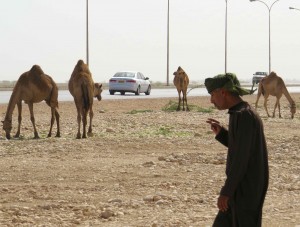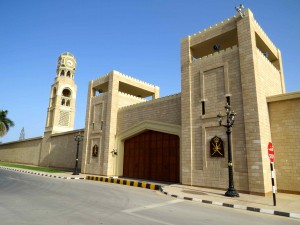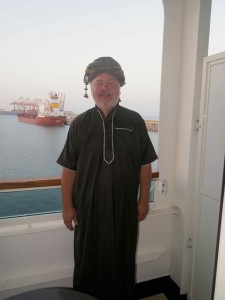- Getting ready to hit the road!
- Some thoughts on Hong Kong…
- A day in Danang and Hue, Vietnam
- Saigon River and Saigon, Vietnam
- Siem Reap and Temples, Cambodia
- The Floating Village — Kompong Phluk, Cambodia
- Phnom Penh and the road to Sihanoukville, Cambodia
- Bangkok, Thailand
- Day 2 in Bangkok — Ayutthaya, Thailand
- Singapore
- Langkawi Island, Malaysia
- Phuket, Thailand — or sort of…
- New Delhi, India
- Agra and the Taj Mahal
- The road to — and Jaipur, India
- India — a few closing thoughts.
- Dubai, United Arab Emirates
- Oman (The Sultanate of)
- Luxor, Karnak, and the Valley of the Kings, Egypt
- Petra, Jordan
- Sharm el Sheik and St. Catherine’s Monastery, Egypt
- Cairo and Giza, Egypt
- Egypt — Some final thoughts…
- Zooming around Israel
- Bodrum, Kusadasi, and Ephesus, Turkey
- Corfu, Greece
- Dubrovnik and Zadar, Croatia
- Venice, Italy — the last hurrah!
Okay, let’s start with a test. How many people actually know where Oman is? Be truthful! Well, I didn’t really know either. Frankly, I’ve always paid more attention to Asia than the Middle East. But if you look on a map, you will see how strategically positioned Oman is and why is has been so important since ancient times. You see, Oman sits at the mouth of the Persian Gulf. But, even before the oil boom, Oman has traditionally sat at the crossroads of trade from Asia, India, Africa, and the Middle East and Mediterranean. It was also the center of the frankincense trade. As a consequence, the history of Oman has been a turbulent one – whether with the expansion or contraction of their own empire or with the occupation and overthrow of Portugal, or even with the leftist Dhofar Rebellion (supported by the Soviet Union and China) that was put down in 1975. To me, the modern era of Oman started with the ascendency of the current Sultan Qaboos (which translates to “handsome face”) who took over from his father in a bloodless coup in 1970. The Sultan was able to rally his people and instituted major reforms across the country. In fact, in 2010, the UN Development Program recognized Oman as the nation most improved over the past 40 years. Quite a feat!
So what does that look like? Today, people in Oman live quite well. They are all given land to build a home and, if they choose not to, they are given a pre-built home. They have free education and health care. They have less than 5% unemployment with 95% of the Omanis working for the government. They pay no income tax. Their retirement pay is 80% of their working salary. Attendance at sporting events is free. So how is this paid for? That’s right; good old oil (and natural gas that is waiting to be developed). Not bad, huh? Having said that, they are somewhat paternalistic like Singapore (e.g., you will be stopped and fined if your car is dirty or has a dent in it!). You also will be taken away if you speak badly of the Sultan in public. All in all though, people are very happy and they love the Sultan!
Now that you have the map out, check out the geography of Oman. You will see that it extends quite a way in a NE/SW direction. We actually spent three days visiting ports in different parts of the country. Each was quite different in geography, as well as culture. Our first stop was Khasab – on the northern tip of the Strait of Hormuz. It is actually separated from the rest of Oman by a slice of the United Arab Emirates (it’s a long story!). Here you find the fjords of Oman. While you would be hard pressed to believe it, these are actually glacial fjords, although it looks like there were lots of other upheavals as well. There’s not really much to do here, but we took a dhow (boat) cruise into the fjords and down to Telegraph Island – a former British telegraph amplification station (along the line from London to Pakistan). The water was very clear and great to swim in. We also had a family of dolphins that followed us along. One of the most interesting things was the constant flow of motorboats into Khasab. It turns out that these are smugglers coming from Iran. The boats come in groups of five – all bringing goats or similar goods. They trade for electronics, etc. to bring back to the black market in Iran. The Omanis don’t seem to interfere with this; this risk is on the Iranian side. A one-way transit is 45 miles across the Strait of Hormuz, dodging all the huge tankers, naval vessels, etc. that are transiting. They go in groups of five so that if there is any interdiction effort, typically they will only get one boat. That boat driver goes to jail for two months and then he gets his share of the rest of the haul. Then they are at it again!
The next stop was in Muscat, today’s capital of Oman and it’s largest city. The Sultan spends most of his time here and much of the government is centered here. This also is a major trade center, with a lot of shipping coming back and forth. As in Dubai, this is where one of the big souks of Oman is located. It seems that nearly every stall is selling frankincense and myrrh as well as incense burners. There is also a lot of hammered silver, copper and brass. Because it is so hot and dry here, dates grow well and Muscat has around 180 varieties of dates. In addition to the souk, we visited the Grand Mosque, paid for by the Sultan. This is truly a work of art. It also presents another reminder that men are in charge here. The women’s prayer room is nice – sort of Motel 6 quality. The men’s prayer room is Four Seasons all the way! It has the world’s second largest hand-woven carpet (70 x 60 meters, 21 tons in weight, 1,700,000,000 individual knots, made by 600 women for 4 years) and the second largest chandelier (14 meters high, 8 tons in weight, plated in 24 carat gold, made up of 600,000 Swarovski crystals, and 1,122 light bulbs). By the way, the chandelier has a trap door that can allow up to 4 men inside to change light bulbs! I found myself singing “It’s a man’s world after all” – the women weren’t charmed. We also visited the grounds of the Royal Palace and the Bait al Bagh Museum.
Our last stop in Oman was in Salalah, one of the most southwestern cities in the country and fairly close to Yemen. Salalah is somewhat cooler and more humid than either Khasab or Muscat. As a consequence, you see a lot more coconut palms here and the hills are much more verdant – especially in the monsoon season when people from all over the Middle East come to visit. The economy here is pretty much based on oil, although it is still known as the “perfume capital of Arabia.” One of the places we visited was Sumhuram, an ancient trading port where the frankincense (coming from the trees that grew along the mountainside) was loaded onto ships heading to the East. We also visited the local historical museum, another of the Sultan’s palaces and the local souk. This is where I picked up my dishdasha (gown), kummar (a very intricately embroidered cap), and muzzar (a scarf that is folded into a turban over the kummar). Very comfortable!
Off for four days at sea (through pirate alley) and onto Egypt!
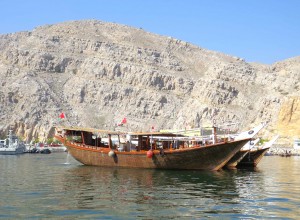
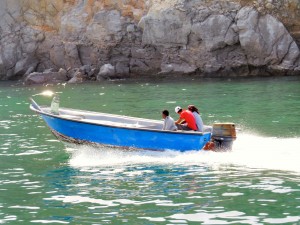
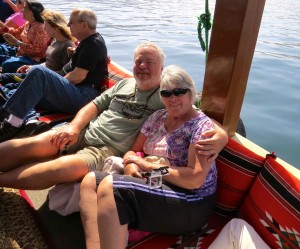
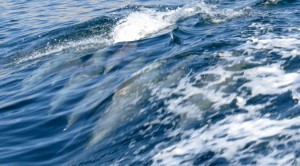
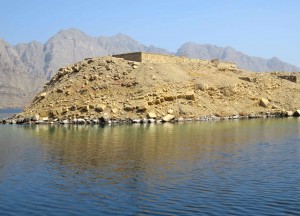
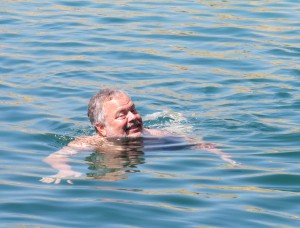
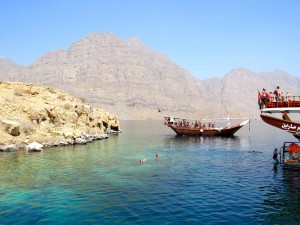
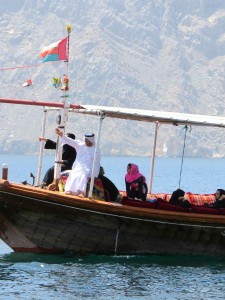
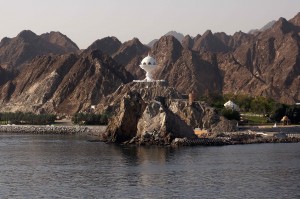
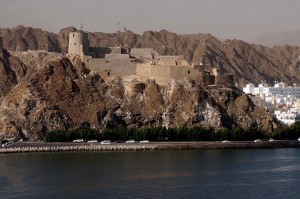
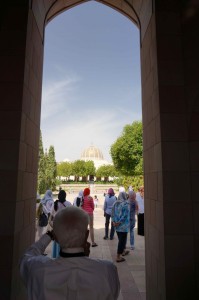
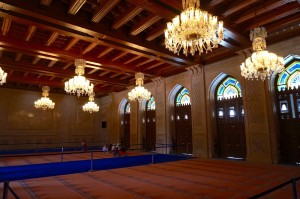
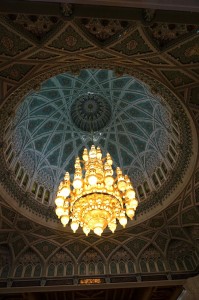
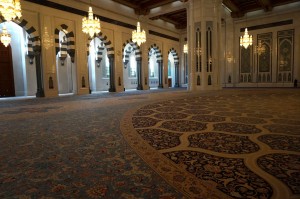
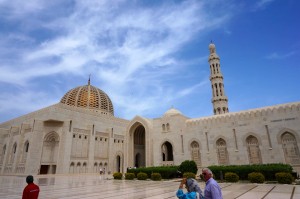
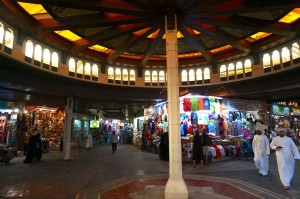
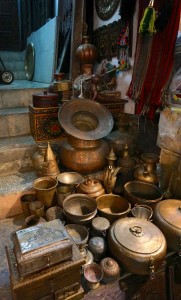
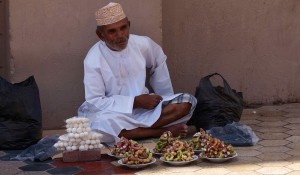
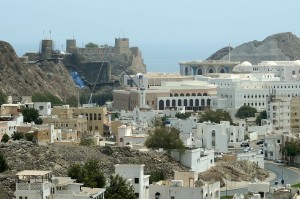
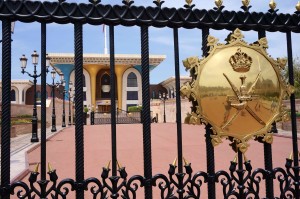
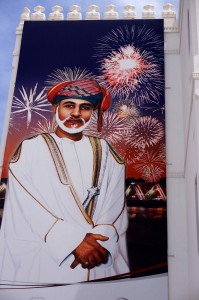
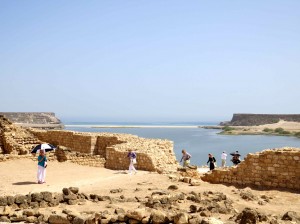 The ancient port of Sumhuram in Salalah
The ancient port of Sumhuram in Salalah
I call this “Camels on highway with smoking guide.” Lot’s of symbolism here…
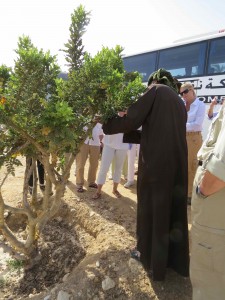
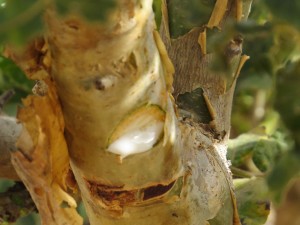 The sap ultimately hardens to a resin that can be burned to make the house smell nice (and keep away mosquitoes) or dissolved in water to use for stomach aches. Who knew?
The sap ultimately hardens to a resin that can be burned to make the house smell nice (and keep away mosquitoes) or dissolved in water to use for stomach aches. Who knew?
This entry was posted in Cruising, Oman, Travel
